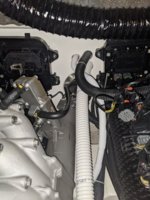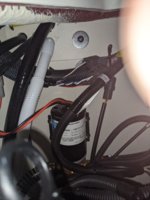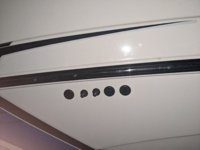slickstick
Jet Boat Addict
- Messages
- 204
- Reaction score
- 86
- Points
- 87
- Boat Make
- Yamaha
- Year
- 2019
- Boat Model
- 212X
- Boat Length
- 21
First part of the job is done. Thru hull installed, pump mounted, and hose ran. I think I need to re-run the hose so it doesn't dip down into the engine bay where water will get stuck in it. I also noticed in the instructions it says the pump outlet should face the rear of the boat. I am guessing this is just because in their picture they show the thru hull on the transom. It seems to make more sense for the hose connection to face the direction the water needs pumped, right? In my case this is towards the front of the boat.






















